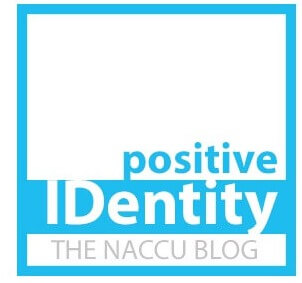RFP Like a Champion
RFP Like a Champion
When it comes to campus credential programs, few words spark more sighs than “RFP.” The Request for Proposal process is often viewed as a long, complicated, and sometimes frustrating requirement. Yet RFPs are also one of the most powerful tools available to ensure your campus gets the technology and services it truly needs.
In a recent NACCU webinar, Matthew Moore from The Ohio State University shared his insights on how institutions can approach the RFP process in a way that leads to better results. The discussion shed light on why RFPs matter, how to manage them effectively, and how to walk away with a solution that supports your students and staff for years to come.
Why Campuses Turn to RFPs
There are plenty of reasons a card office may find itself writing an RFP. Perhaps your current system is no longer performing the way it should. Maybe new business needs have emerged, such as a new residence hall or dining facility. Sometimes leadership wants to explore new technologies like mobile credentials or biometric solutions. And, of course, many institutions end up issuing an RFP simply because the contract requires renewal.
Regardless of the reason, your “why” matters. The reason you are issuing an RFP should drive the questions you ask and the requirements you set. Are you looking for a simple fix to a broken process? Are you adding new services onto your existing system? Or are you completely rebuilding your credential program from the ground up?
Partnering with Procurement
Every RFP involves procurement, whether that means a full purchasing office or a single staff member managing contracts. While it can be tempting to view procurement as a hurdle, the truth is they are your best ally. They know the regulations, they manage compliance, and they have the infrastructure to publish and manage RFPs effectively.
Your role is to provide the substance. Procurement will handle the process, but you know the needs of your campus best. You will define the scope, write the requirements, and ensure the final document communicates clearly what your institution expects from potential vendors.
Building a Strong RFP
Matthew emphasized that time is one of the most important factors in writing a successful RFP. Allowing at least four weeks for responses ensures vendors can craft detailed, thoughtful proposals. The more specific and transparent you are about your current systems, dependencies, and priorities, the better the responses will be.
Involving stakeholders across campus is equally important. Housing, dining, security, libraries, and IT all rely on credential systems in different ways. Understanding their needs helps ensure the final solution supports everyone who interacts with your campus ID program.
NACCU Members Have an Advantage
If you are a NACCU member, you do not have to start from scratch. The NACCU Vault includes a section dedicated to RFP & Procurement Resources, packed with tools and templates created by and for higher ed professionals.
Members can:
-
Access a Question Bank full of sample questions to strengthen their RFPs and RFIs.
-
Explore system exploration guides that demystify the vendor selection process.
-
Review sample RFPs submitted by other institutions to see how peers approached similar projects.
-
Share their own documents to strengthen the collective knowledge of the community.
These resources make it easier to craft an RFP that is thorough, relevant, and aligned with campus priorities without reinventing the wheel.
Evaluating Proposals Fairly
Once the responses are in, the fun begins. Evaluation should be based on clear scoring criteria that were shared in advance. Price is important, but so is value. Implementation plans, references, and the ability to integrate with existing systems all matter when comparing vendors.
Many campuses use a scorecard to rate proposals on factors such as service quality, implementation timeline, and overall comprehensiveness. Keeping the scoring system simple makes the process easier and ensures decisions are defensible if challenged.
Avoiding Common Pitfalls
Several missteps can derail an RFP. Copying another school’s RFP without tailoring it to your needs can leave you with irrelevant requirements. Listing too many “must-haves” may discourage vendors from responding. And requiring physical binders of proposals in today’s digital world only creates more work for everyone involved.
Instead, focus on clarity, transparency, and collaboration. Make requirements truly mandatory, use preferences to guide evaluation, and keep the process as open and accessible as possible.
Why RFPs Matter More Than Ever
With campuses facing shrinking budgets, enrollment cliffs, and rising expectations from students, choosing the right partners for your credential program is more critical than ever. An RFP may be time-consuming, but when done well, it can help your institution secure the right solution, avoid costly missteps, and ensure your credential program is positioned for the future.
As Matthew reminded attendees, if you are going to invest the time in an RFP, do it right. Define your scope, involve your stakeholders, and use procurement as your ally. At the end of the process, the effort you put in will determine the value you get out.
And if you are not yet a NACCU member, now may be the perfect time to join. Resources like the RFP & Procurement collection in the NACCU Vault give you a head start on building stronger proposals and connecting with peers who have been through the process before.
Join NACCU Today
NACCU members unlock exclusive tools like the RFP & Procurement Resources in the Vault, plus a network of peers and best practices to strengthen campus card programs. Join NACCU today and get access.

